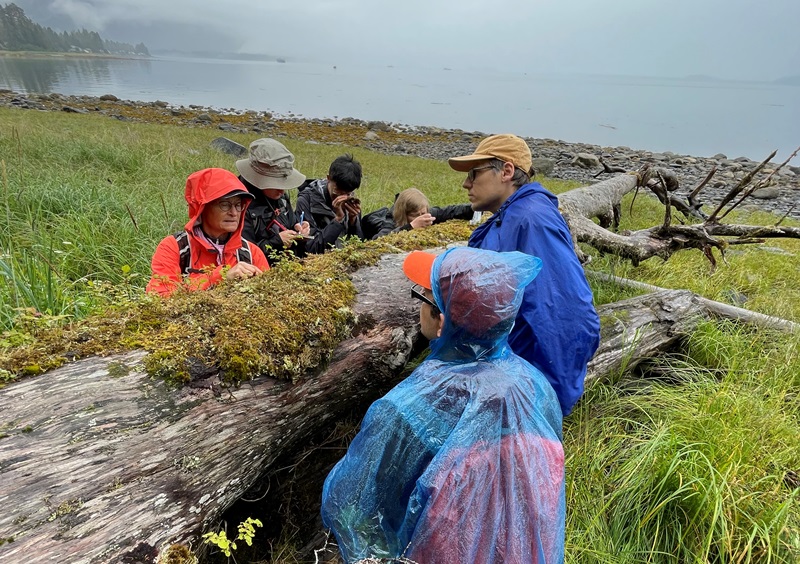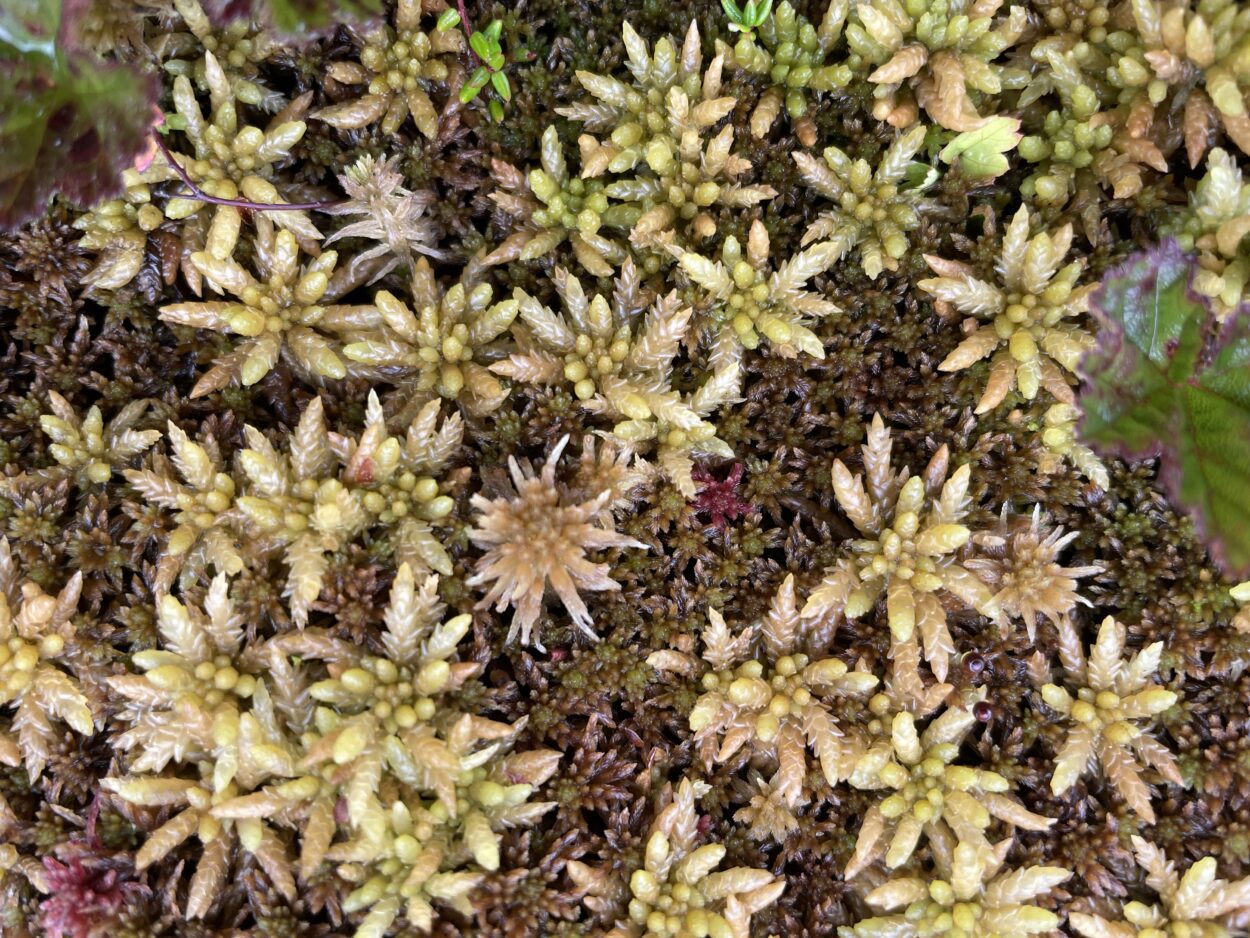
There’s an intricate world of plants that make up the muskeg bogs on the islands of Southeast Alaska. Some of those plants may hold clues for how people can store water in the future, or grow more disease-resistant food. KFSK’s Katherine Monahan learned more than she expected on a recent tour of Petersburg’s lichens and mosses.
It’s a bright, misty evening in Petersburg’s muskegs. People in raincoats and rubber boots gather at the Hungry Point trailhead, and step into an ancient peat bog that sucks at their boots.
“It’s an amazing sponge, and it stores water to feed the salmon streams when it’s super hot,” says Joni Johnson. She’s leading the walk along with fellow U.S. Forest Service ecologist Karen Dillman. As they point out the structures of the tiny plants around us, the incredible complexity begins to reveal itself.
“So lichens are fungi that have learned how to cultivate algae, to photosynthesize for them,” says Dillman. “And they take the sugars of the algae to live. Because, look at it, there’s no roots. It’s just living in water.”
As it turns out, along on the tour is a group of world-class experts. They are visiting Petersburg on their way to the Botanical Society of America’s annual conference, which this year takes place in Anchorage. There is a specialist in insectivorous plants, crouching down to peer through a magnifier at the bright, spiny insect-eaters. And a PhD student specializing in sphagnum mosses, who’s almost leaping about like a kid at an Easter egg hunt, collecting specimens and wrapping them in paper. Nearby, Philip Shushkov is swatting at no-see-ums. He’s a theoretical chemist with Indiana University, and hopes that mosses will give him ideas for his research in genetic engineering.
“They have certain cell types that have developed before the cell types in vascular plants,” Shushkov says. “And we’ve been actually discussing quite a bit how to leverage this single cell technology and then basically, this will give us clues how to engineer it and change it in the future, for our needs.”
Shushkov’s research partner, Lachezar Nikolov from UCLA, is also here. “Moss is able to retain more than 10 times its own weight in water,” Nikolov says. “We don’t know how this is done. Well, we can think of many different reasons why we would like to invent a material that is able to carry that much water. And we can use use this knowledge of how you would produce this particular cell type for bioengineering or biologically-inspired design of materials.”

Nikolov, who specializes in flowers, creates theories on how plants’ genes direct their development. Then Shushkov builds mathematical and chemical models of these theories to test them out. And then the results of their experiments can be used, for example, to help engineer stronger blueberry crops. Nikolov is amazed at all the different varieties of blueberry growing in the muskeg. He says the monocultures grown for mass consumption are vulnerable to getting wiped out entirely by fungus or parasites, even as the world population increases.
“It’s a very precarious time as well,” says Nikolov, “because much of that biodiversity that we see around us is disappearing very fast, much faster than we can actually study it. So we’re losing invaluable resources, genetic resources that we could actually use and harness to make better crops that will feed us for centuries ahead.”
That’s why, he says, it’s important to visit places like Petersburg, where vital knowledge can be gleaned from an ancient, intricately balanced ecosystem. Though species are rapidly dying out across much of the globe, here in the muskeg nature seems intact and eternal.










